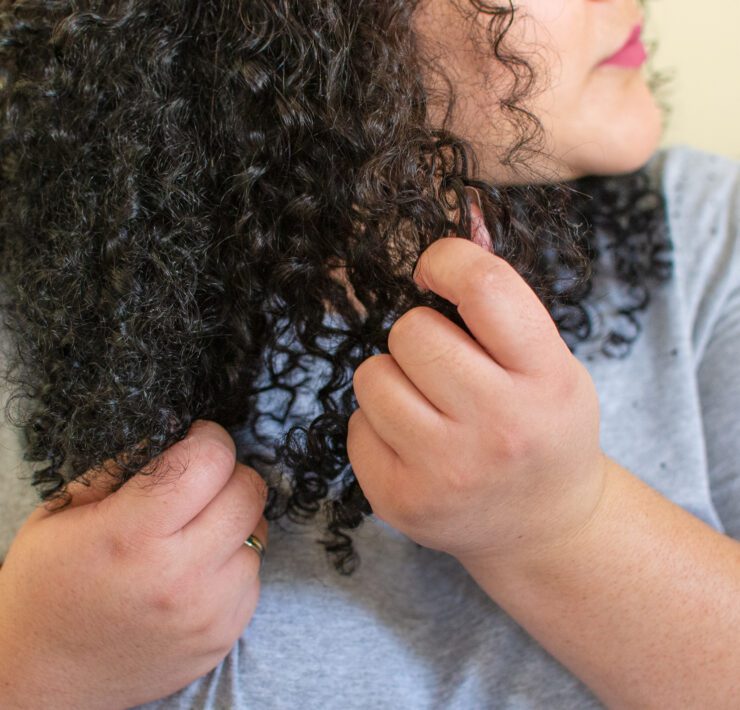
To understand hair porosity and hair health, we need to take a close look at the hair cuticles. In Hair 101, we discussed the components of hair and showed a scanning Electron Microscope picture of the outermost layer of the hair: the cuticles.
Closed cuticles = healthy hair
Closed (smooth) cuticles are #hairgoals. Damaged and raised hair cuticles are #badhairday.
What types of styling and treatments damage the cuticles?
Excessive combing and brushing, and certain hairstyles can damage the cuticles. It is the raised cuticles that make relaxed, permed, colored, bleached, or other chemically altered hair more fragile and susceptible to damage.
How Does This Happen?
Cuticles are complex, multilayered structures held together with lipids. One reason the hair becomes weaker when chemically treated is that this lipid layer, which keeps the cuticle ‘closed’ or smooth, is eroded. In addition, relaxing and coloring rely on alkaline products (with a pH well above 7) and such products are capable of raising the hair cuticle resulting in tangled, dry, and weak hair. The pH of hair and skin is around 5.5.
Each time you wet your hair, either to moisturize it or cleanse it with shampoo, it slightly swells and raises the hair cuticle. Swelling the hair shaft for too long or repeatedly can damage the hair cuticle and cortex, which can weaken hair. Using a conditioner fixes this imbalance and smoothes the cuticles on the hair. Conditioners also soften the hair and minimize static. In fact, conditioners, deep-conditioning treatment masks, moisturizers, and protein treatments are designed to smooth down the cuticle or fill in missing pieces in the cuticle layer. Make sure to choose products that contain cationic surfactants (ingredients that condition the hair and aid in detangling). Weekly deep conditioning is ideal for bleached, colored, or chemically treated hair.
Contrary to popular belief, the hair cuticles do not need to “raise” for some substances to penetrate. Substances able to penetrate hair do so because they have the right chemistry, e.g., size, shape, charge, and/or flexibility to get underneath the tiny space of a smooth cuticle. In fact, household items such as coconut oil and olive oil can penetrate hair reasonably well. It is therefore beneficial for your deep conditioner to have coconut or olive oil in it, especially if your hair tends to be on the dry side.
Pre-washing with coconut oil can also prevent or lessen hair damage. This is because the coconut oil prevents the hair from taking up too much water and stops the strand from swelling. See the article on pre-pooing here.
If your hair is natural and healthy, you most likely have a smooth/sealed cuticle. Even though the cuticle is sealed, water and some oils still get in!
In conclusion, if you don’t live in a humid or very dry environment, try humectants in your leave-in and some proteins in your conditioner to help your hair retain moisture better. And remember that the ideal pH for hair products is around 5.5. You can test the pH of your hair products using pH strips.
Several Resources We Find Useful:
Journal of Colloid and Interface Science (2004) 269: 329–335
Aust Fam Physician (1997) 26(11):1308-9
J Invest Dermatol (1985) 84(4):282-4
Biopolymers (1981) 20:2649-2
https://quicksilverhair.com/the-ultimate-guide-to-hair-porosity-does-it-really-matter/






